It was another classic winter start to the day for us – a light frost settled on anything with moisture in it, under a cloudless sky with no breeze at all.
We were packed up and back on the Oodnadatta Track at 9.00am. The drive into Oodnadatta took about an hour, through desolate country with sparse salt bush and little else breaking through the gibber desert surface. As we approached Oodnadatta our mobile phones pinged with a backlog of messages and alerts as we entered a rare area of Telstra reception. Off to the west we could see the Painted Desert that we visited a number of years ago. It is a barren series of jump-ups and eroded hills displaying the colour pallette common to this area – ochre, yellow and white.
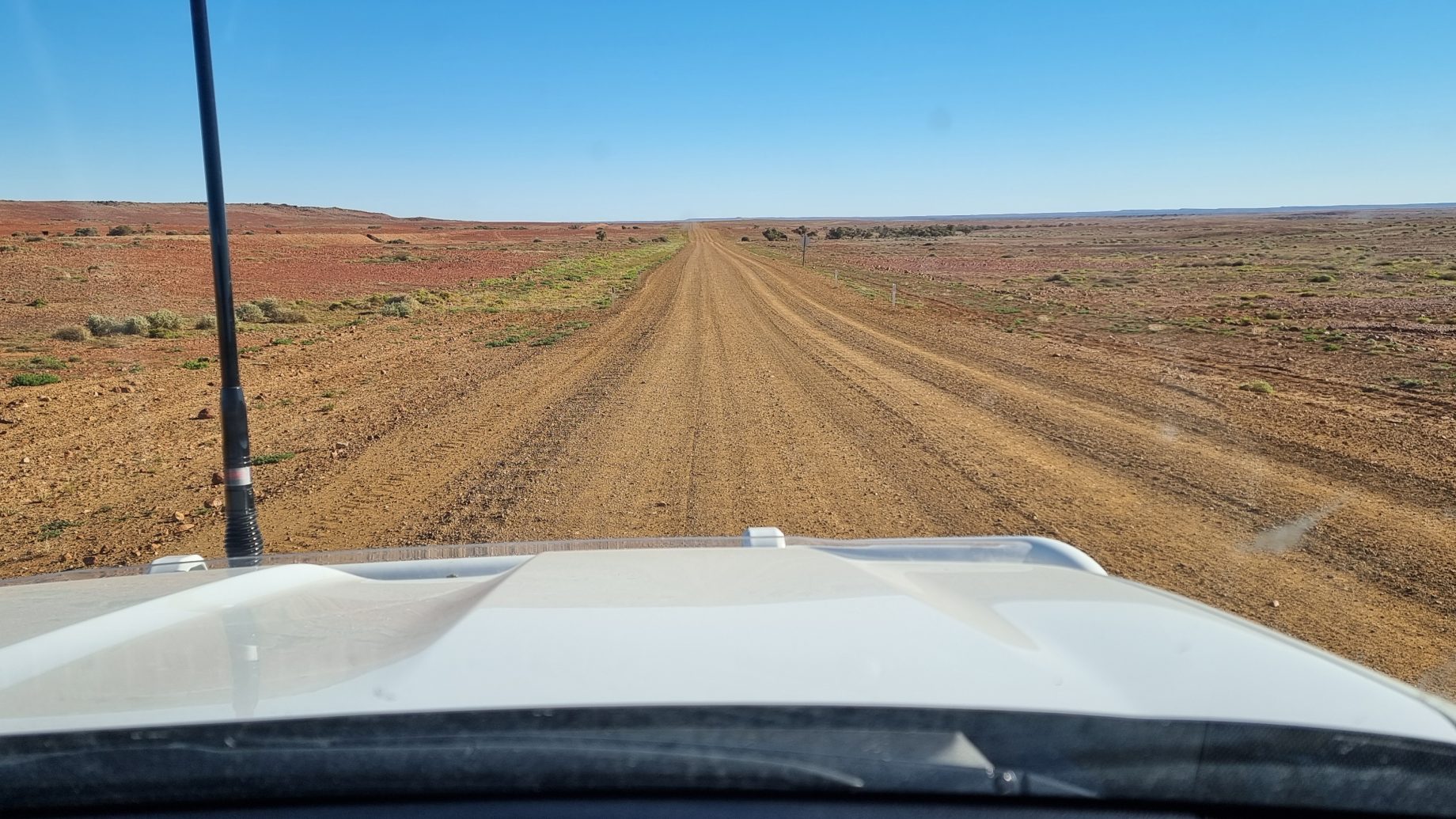
Oodnadatta is many things. It is a small indigenous community, a roadhouse selling fuel to passers-by, a repair shop for failing vehicles, a grocery store, post office, bank, cafe and licenced liquor outlet (6 cans of beer for $49.00) – with almost everything under the roof of the Pink Roadhouse.
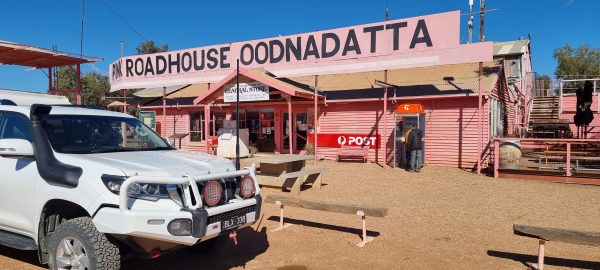
Chris pulled in to top up with diesel at $2.99 / litre. After a few failed attempts Wendy checked inside the roadhouse to see what was preventing the pump from working. The tanker driver offloading a fresh supply of fuel suggested that the tank the bowser was drawing from may be empty; we should try the bowsers nearer to his tanker. Problem solved – our fuel tank was filled without further fuss.
The tanker driver and Chris passed the time of day with a bit of outback chitchat. The delivery route the tanker driver was following included Marree, Coober Pedy, Oodnadatta, Uluru and a remote community to the west of Uluru – all before returning to Port Augusta.
We inspected what was for sale in the mini supermarket within the roadhouse. The fresh fruit and vegies seemed to have been recently delivered, so we availed ourselves of some cos lettuce and a capsicum. Coffees were ordered and we sat down to catch up on emails and news from home, as well as to update and post the latest blog entry.
Soon enough we were back in the Prado heading north. We left the Oodnadatta Track only a few minutes out of town and followed the Mount Dare Road through Hamilton Station which (as we heard over our UHF radio) is one of the biggest cattle stations in Australia. An unusually wet year had left a green tinge of colour to the landscape, with all plants and trees taking advantage of the conditions. The cattle we sighted also looked to have enjoyed the conditions as they all appeared to be well fed.
We missed the Perdirka Public Access Road turnoff when passing by the Hamilton Station homestead and staff quarters. Fortunately, Wendy checked and rechecked the maps and we saw the error we had made, doubling back to the turnoff and continuing in the right direction. The track we were following was of lower standard than the wider (and more frequently graded) Oodnadatta Track.
At this point we were following a single lane track that hadn’t been graded for quite some time. There were more stretches of corrugations, and vehicles had passed over the track during recent rains creating deep ruts that had subsequently dried hard.
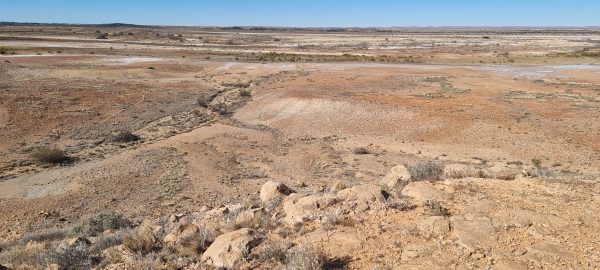
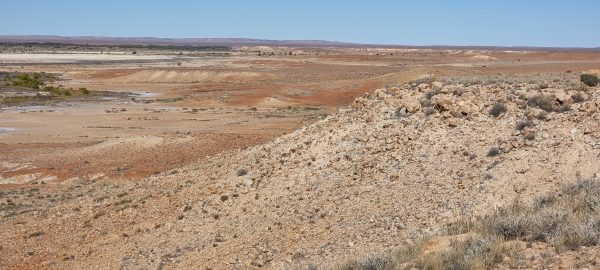
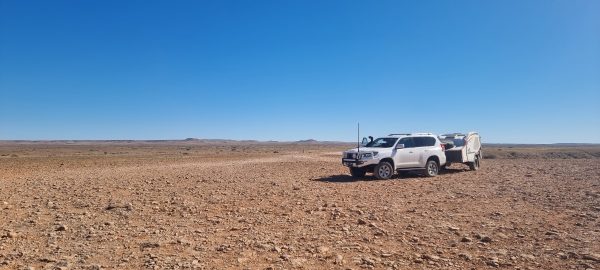
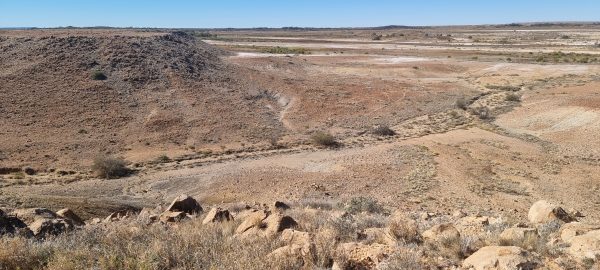
A sign announcing our arrival at the Witjira Nation Park was cause to stop and take a photo recording this milestone achievement. It was when we stopped that Chris noticed the Anderson plug (which connects the wiring between the Tvan and the Prado) had worked loose and been destroyed by the gravel thrown up by the rear tyres. This connection provides power to charge the batteries in the Tvan – batteries that are necessary to run our fridge, freezer, lights and heater, as well as to charge our devices. Fortunately Chris had packed 2 spare Anderson plugs for just such a mishap and was able to fix the problem when we pulled up for the day.
The ruins of the former Dalhousie station are an example of the blind determination early settlers had to make a living in this unforgiving landscape. The substantial stone buildings have been well preserved by park rangers and a volunteer group. Interestingly, the early European settlers worked alongside first nations people before packing it in and moving away – leaving the land to be managed once again by its original owners who stayed on country.
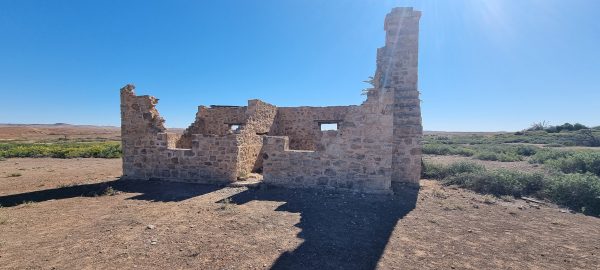
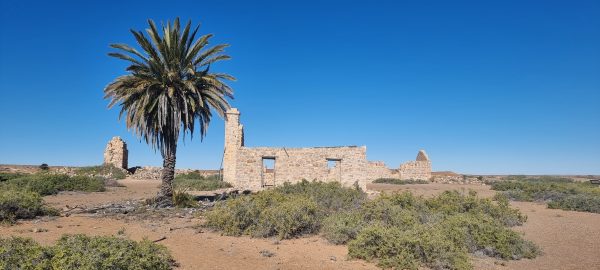

Dalhousie Springs is just one of 148 active mound springs within the National Park. The artesian water from the spring leaves the ground at somewhere between 36C and 42C and fills an area of approximately 300 x 50 metres to a depth of several metres. It has long been a special place for indigenous people and these days it provides outback travellers with an opportunity to wash away some of the outback dust while relaxing in nature’s spa bath.

There are a surprising number of vehicles parked up overnight in the campground. Many are setting off to cross the Simpson Desert by heading due east to Birdsville, while others are tackling the Simpson Desert crossing to Birdsville along a different, longer route. Others, like us, have stopped in for a desert spa when heading north or south between Alice Springs and places to the south. Another cold night under a cloudless desert sky is anticipated. Our heater is going to get another workout tonight.
